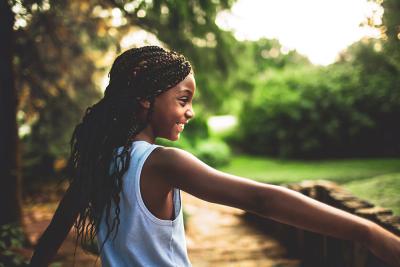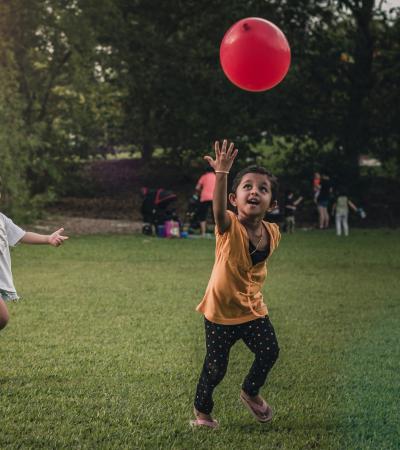As libraries become centers of community-based lifelong learning, they seek more opportunities to enhance access to natural spaces located in the communities they serve. The nonprofit Children & Nature Network (C&NN) helps librarians find the partners and resources they need to understand how and why to connect children and families to nature. C&NN also helps potential partners understand the impacts that can derive from working with libraries.
Over the past 20 years, a growing number of researchers and policy makers have analyzed the problem of “nature-deficit disorder,” a term coined in 2005 by Richard Louv, one of the founders of C&NN. This month’s blog post looks at how the resources of this nonprofit network can be used to jump-start nature programming at your library.

Why nature programs?
First, let’s take a moment to discuss why this programming is important.
I first learned about C&NN when I attended the Robert Wood Johnson Foundation’s Sharing Knowledge to Build a Culture of Health conference in March 2019. C&NN, alongside related organizations like ParkRX and the National Recreation and Park Association’s Health & Wellness Initiative, exist to communicate that access to nature has myriad health benefits: for individuals, for communities and for society. C&NN’s open-access research library shows that access to nature improves health and wellbeing, imrpoves academic outcomes (such as STEM knowledge), and encourages our willingness to take care of the planet.
So with that preamble out of the way, let’s see what you can do in your library to increase access to nature.
Common programs ideas
Based on research I published with the C&NN network, two common programs are starting teaching or food gardens on library property and starting StoryWalk® programs in green spaces around the library or in nearby green spaces, such as parks or greenways.
But there are many, many other ways you can support access to nature. C&NN recently teamed up with the National League of Cities to launch the Cities Connecting Children to Nature initiative. As part of that work, C&NN released earlier this year a toolkit entitled “Libraries as Nature Connectors” that includes three strategies:
- Resource lending (e.g. seeds, nature backpacks, passes to state parks, snowshoes, nature-themed books)
- Nature activities and infrastructure (e.g. family nature clubs, regularly scheduled family activities in nature)
- Youth leadership (e.g. youth-led nature-stewardship projects – think of involving your Teen Advisory Board in a trash clean-up around the library)
This toolkit is based on work C&NN has done for years with the St. Paul Public Library, where C&NN “has launched a national demonstration project to connect communities to nature through library and park partnerships.” This demonstration project has since expanded to include the public libraries in San Antonio, Houston and San Francisco. C&NN has also dug deeply into other nature-based programming in the state of Minnesota, releasing a report in spring 2017 that found Minnesota public libraries had offered the following nature-based programming and services:
- 84 percent offered nature programming in the library with external groups (e.g., master gardeners, Department of Natural Resources)
- 73 percent curated nature-based collections of books for children
- 64 percent curated nature-based activities for children
- 60 percent offered outdoor programs (in nearby outdoor space) such as a StoryWalk
- 48 percent took part in an ongoing partnership that helps connect children to nature
- 41 percent had a nearby public park that could be used for outdoor nature experiences
- 39 percent curated nature-based collections for adults/families
- 27 percent had an outdoor nature space that belonged to the library
- 16 percent did something that qualified as "other"
- 7 percent had youth leaders to support nature-based programming
Resources and partners
How can you develop this programming at your library? First, take a look at C&NN resources discussed in this blog to get the information and inspiration you need to take action at your library. Although the resources are focused in particular on children, really the resources can be used to start programming for all ages, including adults and older adults.
Second, look around to see who you could work with in your community to start this programming. My research shows that common partners include: Parks & Recreation Agencies, the U.S. Department of Agriculture, and in particular its county extension agents, arboretums and science centers.
There are many other partners you could consider as well. Local hardware stores may donate the tools and labor needed to help you get your library garden started. Health departments may donate snowshoes or supplies to promote the health benefits of nature: That’s what happened in Vermont, where the Vermont Department of Health donated snowshoes to nearly 50 public libraries across the state to promote the health benefits of access to nature.
Think outside the box! The main thing is to look around your community and see who is passionate about getting kids, families and all ages out into nature. These are the people you want to work with.
Finally, don’t forget about C&NN’s national network. Consider joining their Community Networks focused on “Natural Teachers,” “Natural Families” and “Natural Leaders” to get connected to others working on this topic across the country, and to get ideas on whom you may work with to jump-start this programming at your library.
Finally, if you like what C&NN stands for and want to support them, you can join their network as a sustaining member.


